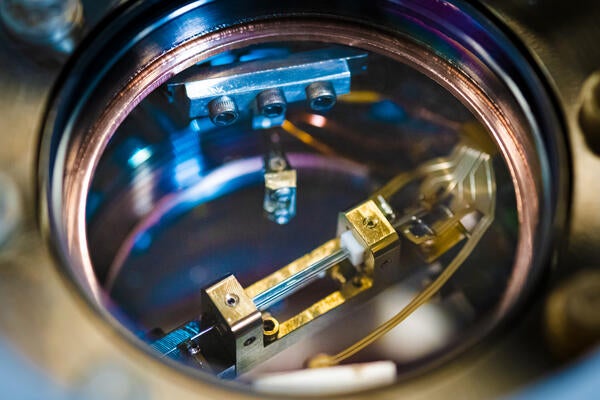
Satellite finds rising carbon dioxide levels in upper atmosphere
A research project with its roots at the University of Waterloo has found that human activity is raising levels of carbon dioxide (CO2) in the uppermost layers of the atmosphere

A research project with its roots at the University of Waterloo has found that human activity is raising levels of carbon dioxide (CO2) in the uppermost layers of the atmosphere
By Media RelationsWATERLOO, Ont. (Monday, Nov. 12, 2012) - A research project with its roots at the University of Waterloo has found that human activity is raising levels of carbon dioxide (CO2) in the uppermost layers of the atmosphere.
It is the first hard evidence that such levels are increasing there at a faster rate than can be explained by solar activity or exhaust from rocket launches. The project’s CO2 measurements are reported in the latest issue of Nature GeoScience.
In the earth’s atmosphere, CO2 molecules can accumulate energy through collisions with other atmospheric gases and then emit this energy as infrared radiation (heat). Near the earth's surface, CO2 contributes to a heating of the atmosphere, making it a key factor in climate change. However, in the upper atmosphere, some of the infrared radiation emitted by CO2 makes it to space, thereby inducing a cooling of the upper atmosphere and causing it to contract. This effect reduces atmospheric drag on low-orbiting satellites and space junk. Objects will stay up longer before plunging to a fiery end deeper in the atmosphere. While it could aggravate the problem of space clutter, it may also reduce the use of fuel-consuming booster rockets required to keep in position large vehicles, such as the International Space Station.
“There hasn’t been a lot of measurement of atmospheric chemistry at these high altitudes,’’ said Chris Boone, a research associate in the Department of Chemistry at Waterloo. “This is a very unique data set.”
Boone and former Waterloo chemistry Professor Peter Bernath were part of the research team. Bernath is now chair of Department of Chemistry and Biochemistry at Old Dominion University, in the U.S. They joined colleagues John Emmert, Michael Stevens and Douglas Drob of the Naval Research Laboratory in Washington to analyze eight years of readings taken by satellite as part of the Atmospheric Chemistry Experiment (ACE).
ACE is comprised of a set of scientific instruments onboard the Canadian satellite SCISAT-1, which is orbiting the earth at an altitude of 650 km. These scientific instruments stare at the sun and measure the spectral pattern that was absorbed from the sunlight as it passed through the atmosphere, from which one can infer the atmospheric concentrations of CO2 and dozens of other gases. Professor Bernath initiated the ACE mission when he was at Waterloo.
ACE has previously provided scientists with information about air pollution and ozone depletion, among other things. Beamed to ground stations in Canada, Alaska, and Sweden, readings from SCISAT-1 are processed and archived at Waterloo’s space operations centre in the Department of Chemistry.

Read more
Waterloo researcher discovers that more harm reduction treatments are needed to eliminate Hep C by 2030

Read more
On World Quantum Day, the Institute for Quantum Computing celebrates progress and momentum

Read more
Waterloo student uses mathematical modelling to bring awareness to opioid-related death reduction method
The University of Waterloo acknowledges that much of our work takes place on the traditional territory of the Neutral, Anishinaabeg and Haudenosaunee peoples. Our main campus is situated on the Haldimand Tract, the land granted to the Six Nations that includes six miles on each side of the Grand River. Our active work toward reconciliation takes place across our campuses through research, learning, teaching, and community building, and is co-ordinated within the Office of Indigenous Relations.